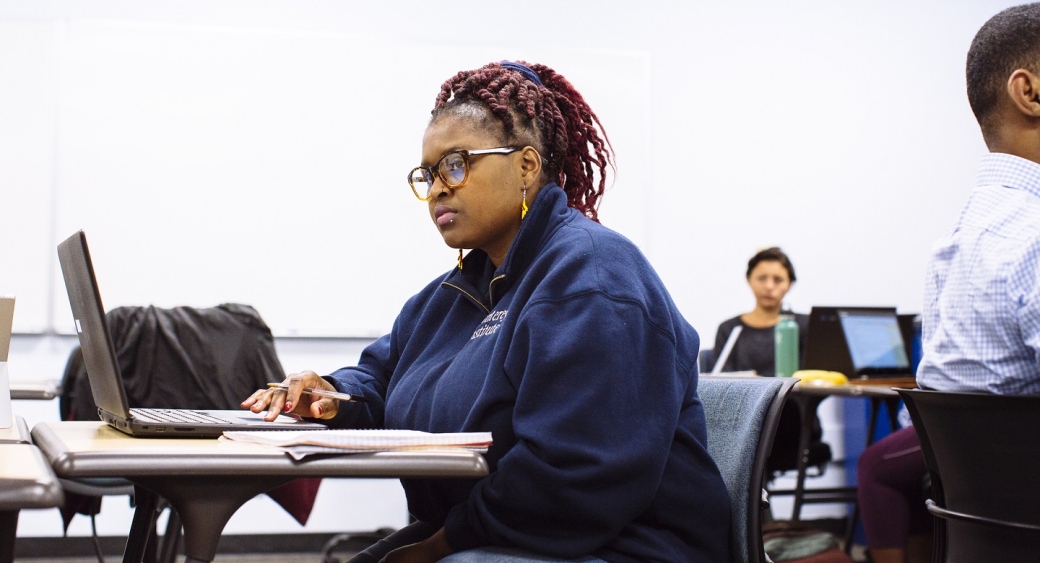Professor Baimyrzaeva Facilitates Strategic Planning Retreat for Roza Otunbayeva Initiative
Professor Mahabat Baimyrzaeva facilitated a strategic planning retreat for the Roza Otunbayeva Initiative in Bishkek, Kyrgyzstan in June, 2019.

During the Institute’s 2021 virtual Spring Preview Days, Professor Mahabat Baimyrzaeva led a workshop titled “Deep Learning: Understanding How to Be a Better Learner.”
In it, she walked students through a deep learning exercise to see what effective learning looks like and what facilitates it; dispelled some of the taken-for-granted assumptions about learning; and encouraged students to become more intentional about the learning process.
Baimyrzaeva explained that most people, when researching graduate programs, focus on what they want to study and what skills they will need for the types of jobs they want to ultimately have. “It’s equally important, I’ll argue,” she said, “to learn how you will study, how you will learn. You may have a great program, but if you’re actually not approaching learning strategically, with a good understanding of what accounts for deep learning, you may waste the opportunity or your money or time…how do you make sure that, wherever you are, you are continually learning?”
The phrase “continually learning” is important; according to the World Economic Forum’s most recent “Future of Jobs” report, the second-most critical skills (after technological skills) are active learning and learning strategies.
Baimyrzaeva said that the complexities of the world today require more than simple expertise in a field. “Expertise is good,” she said, “but it’s no longer enough…you want to have systems thinking; basically, the ability to see a lot of different parallel trends, parallel fields, parallel disciplines. The ability to come up with novel solutions.”
But deep learning does not come from being told something; it comes from experience, often a sudden change in environment or circumstance that exposes one’s faulty or incomplete thinking.
Baimyrzaeva offered her own deep learning experience: she once caused a car accident that forced her to reconsider her belief that she was a skilled and invincible driver, and it changed her driving habits going forward. But deep learning doesn’t have to be negative; one of the most common deep learning experiences, she said, is studying abroad. Culture shock requires people to reassess their assumptions about how to interact with the people and places around them.
But deep learning does not come from being told something; it comes from experience, often a sudden change in environment or circumstance that exposes one’s faulty or incomplete thinking.
While going abroad can be transformative, Baimyrzaeva said it’s also possible to access deep learning on a less dramatic scale: “Take another class. Stretch yourself. Talk to other people. Interact with people with whom you don’t ordinarily interact. Try new things. Embrace discomfort.”
Baimyrzaeva admitted that doing these things can be difficult. “When we’re perceiving new information that doesn’t fit our prior worldview, our immediate reaction is ‘Oh, that must be wrong,’ and we try to fit the reality into our worldview. And we try really hard. We do mental gymnastics.”
But deep learning, she said, means putting oneself in situations where the feedback is too strong to rationalize our way out of. “When you feel discomfort, it means there is cognitive dissonance maybe happening. So take time, write it down, think about it, talk to somebody. Reflection is really key.”
One way of intensifying that feedback is through personal connections. “When you feel people’s pain, when you feel people’s strong emotions, you can’t just go back to the way you think,” she said. “Really authentic conversation that has strong emotional content can help you switch your perspective.”
Whatever the deep learning experience is, according to Baimyrzaeva it must be “immersive, active, personally meaningful, emotional, high-stakes…not just a checkbox.”
“We take information, but nobody gives you knowledge. You create your own knowledge through connecting neural networks in your brain. And that requires active thinking…so whenever possible, put yourself in different situations, in new situations. Think deeply, challenge your assumptions, and create your own mental models.”
Professor Mahabat Baimyrzaeva facilitated a strategic planning retreat for the Roza Otunbayeva Initiative in Bishkek, Kyrgyzstan in June, 2019.
| by Anna Navran MPA/MAIEM ’22
Middlebury Institute alumna Lauren DaSilva, the new Executive Director of the Monterey County Rape Crisis Center, has spent her career supporting survivors of sexual violence.
| by Anna Navran MPA/MAIEM ’22
Emily Hoang, a 2020 graduate of the joint MPA/MA in International Education Management, has been at the forefront of the COVID-19 response in Los Angeles, first helping to organize testing sites, and then vaccination efforts in the community.